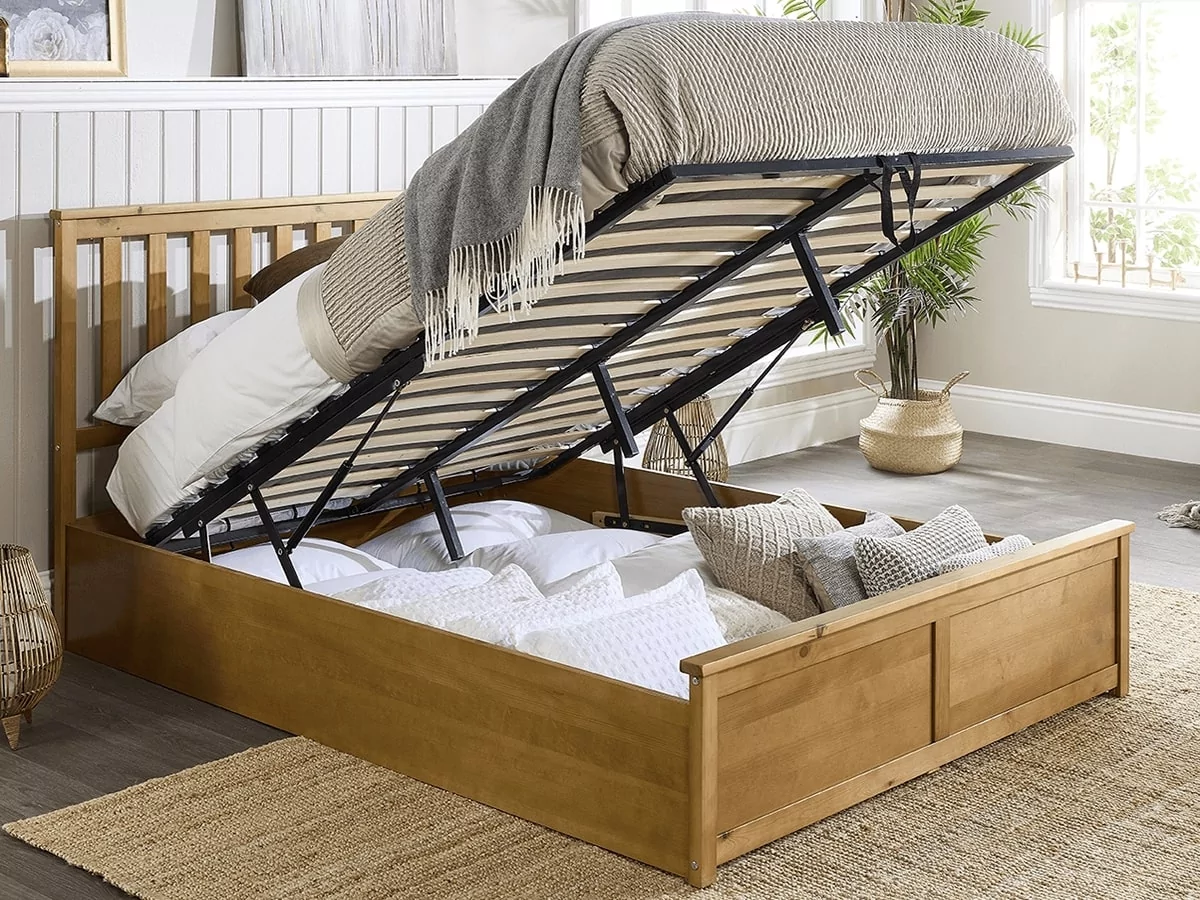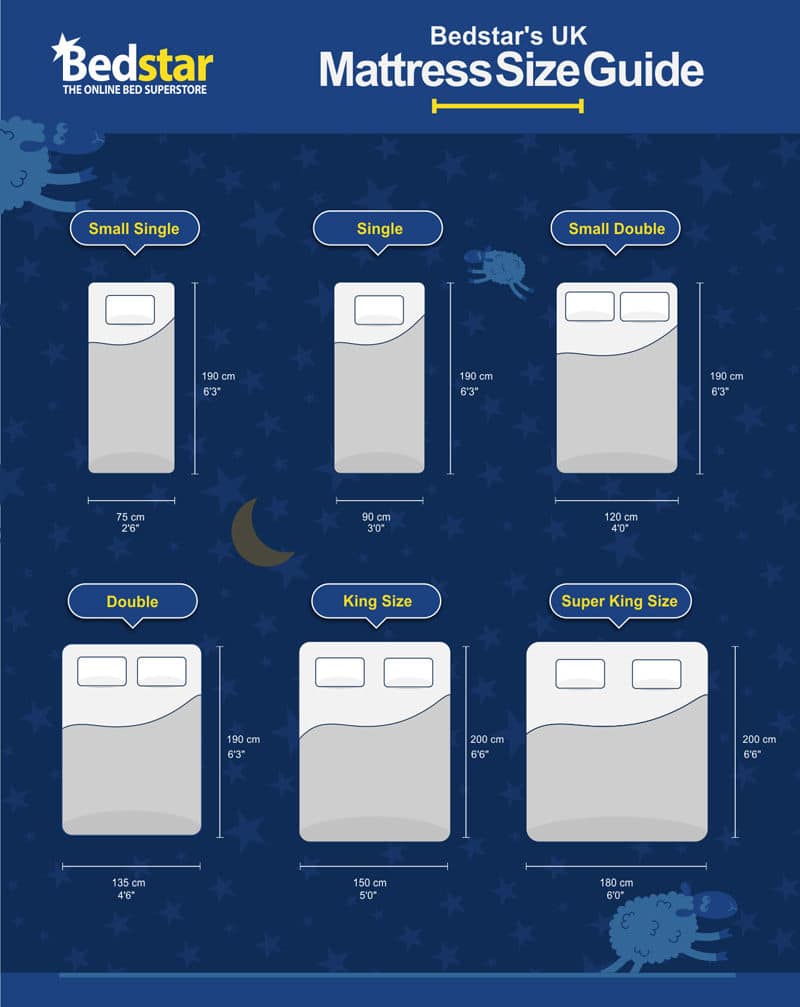Bed and Mattress Guides
Side or end-lift ottoman bed?
Choosing between a side or end-lift ottoman bed might seem straightforward, but your decision will impact your bedroom's functionality for years.
Sometimes, the decision is simple – for instance, if you have a box room and can only position your bed against the wall (making a side-lift ottoman the only choice), or you have minimal space down the sides of your bed (get an end-lift ottoman).
Join us below for a rundown of the main considerations.
Choosing the Right Ottoman Bed
Room layout
Your bedroom's layout determines which ottoman mechanism will work best for your daily routine. When your bed sits snugly against a wall, a side-lift bed offers access to your storage space without requiring you to rearrange your furniture.

An end-lift ottoman is most suitable for middle-of-the-room bed positioning unless you want to access your storage on the side of your room where your door is, in which case a side-lift ottoman is best.
Think about your daily routines and where you need storage access — do you prefer sorting clothes while standing near your wardrobe, or do you often retrieve items while making the bed? Your configuration should complement these habits rather than forcing you to adapt.
Space requirements
End-lift ottomans need approximately 60cm of clearance at the foot of your bed to operate smoothly and safely.
Side-lift configurations require similar clearance along one edge, making them particularly suitable for rooms with more width than length.

Safety aspects
Proper clearance ensures you can safely operate your ottoman's hydraulic struts, which exert upwards of 900N of force to support your mattress.
Your choice of lifting mechanism should account for children and pets in the home. Side-lift options often provide better visibility of the surrounding area during operation.

Storage accessibility
End-lift mechanisms excel at providing uniform access to your entire storage space from a single position.
Your ability to reach items stored at the far end of a side-lift ottoman might be compromised, particularly if you've positioned the bed against a wall for space efficiency.
Practical considerations
Side-lift ottomans prove invaluable when you frequently access seasonal items. They allow you to remain closer to your wardrobe while sorting through stored belongings.

An end-lift configuration benefits your morning routine if you regularly retrieve items while making the bed, offering unobstructed access from the foot end.
Weight distribution
End-lift mechanisms typically provide more balanced weight distribution when opening and closing your ottoman bed.
Your strength requirements remain consistent with a side-lift option, though you might find reaching across the bed width more challenging than managing the length.

Buying tips
Some side-lift ottomans offer the choice of right- or left-sided placement, and some even offer the option of end or side-lift layout—but not always.
Some ottomans have more powerful gas struts that can take loads over 280 kg – these are perfect for heavy couples and thick mattresses.
Bedroom Dimensions
Your room's dimensions, existing furniture placement, and personal storage habits should guide you toward the configuration that best suits your lifestyle.
Assess how you typically organise your bedroom and consider which opening mechanism aligns with your natural movement patterns.
Consider the items you'll store most frequently and how you'll arrange them within the space. End-lift mechanisms offer visibility across the entire storage area, while side-lift options better suit those maintaining organised zones within their storage compartment.
Remember that both configurations offer identical storage capacity and durability, making your choice purely about practical access and room layout. Whether positioned against a wall, floating in the room, or tucked into an alcove, your ottoman bed should enhance rather than hinder your bedroom's functionality.
How to measure your bedroom
Measuring your bedroom for a UK bed follows a similar process to measuring for any bed, but it’s important to account for UK bed sizes, which differ slightly from other regions. Here’s a tailored guide for UK bedrooms:

1. Measure the Bedroom Dimensions
- Length and Width: Use a tape measure to determine the length and width of the room in centimetres or inches. Measure from wall to wall.
- Height: Measure the ceiling height if you’re considering a loft bed, high headboard, or bunk beds.
- Note Obstacles: Identify windows, doors, radiators, built-in wardrobes, or other features that might affect bed placement.
2. Choose the Right UK Bed Size
UK bed sizes are standardised, so choose one that fits your needs and room dimensions. Common UK bed sizes are:
- Single: 90 cm x 190 cm (3 ft x 6 ft 3 in)
- Small Double (Queen): 120 cm x 190 cm (4 ft x 6 ft 3 in)
- Double: 135 cm x 190 cm (4 ft 6 in x 6 ft 3 in)
- King: 150 cm x 200 cm (5 ft x 6 ft 6 in)
- Super King: 180 cm x 200 cm (6 ft x 6 ft 6 in)
3. Measure the Bed Frame
- If you already have a bed frame, measure its length, width, and height (including the headboard and footboard).
- If you’re buying a new bed, check the manufacturer’s dimensions, as frames can extend beyond the mattress size.
4. Plan for Clearance
- Walking Space: Leave at least 60-90 cm (24-36 inches) of walking space around the bed for easy movement.
- Furniture Placement: Account for additional furniture like bedside tables, wardrobes, or chests of drawers. Measure their dimensions and plan their placement.
- Door Clearance: Ensure the bed doesn’t block doors, windows, or built-in wardrobes.
5. Use a Floor Plan
- Sketch a rough floor plan of your bedroom on paper or use an online room planner.
- Mark the bed’s position and other furniture to visualize the layout.
6. Consider Mattress Thickness
- Measure the thickness of your mattress (or check the specifications if buying new). UK mattresses typically range from 20-30 cm (8-12 inches) in thickness, but some can be thicker.
7. Test the Layout
- Use painter’s tape or cardboard to outline the bed’s dimensions on the floor. This helps you visualize how much space the bed will occupy.
8. Double-Check Measurements
- Before purchasing a bed, double-check all measurements to ensure it fits comfortably in your room.
Additional Tips for UK Bedrooms
- Storage Beds: If space is limited, consider a storage bed or ottoman bed to maximize under-bed storage.
- Small Rooms: For smaller bedrooms, a single or small double bed might be more practical.
- Headboard Height: Ensure the headboard doesn’t block windows or radiators.
By following these steps, you can ensure your UK bed fits perfectly and your bedroom remains functional and comfortable!

